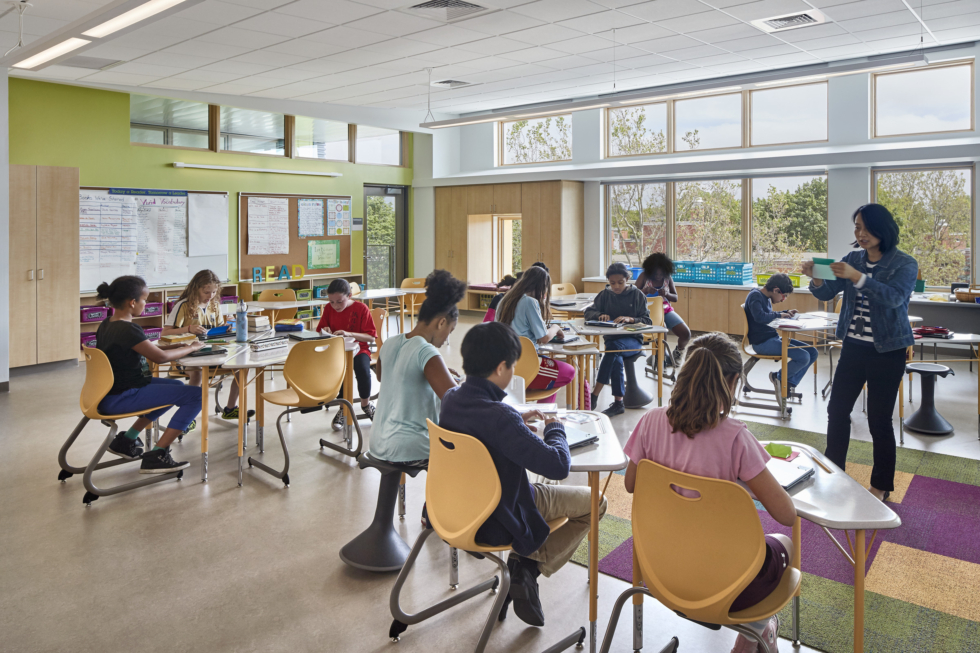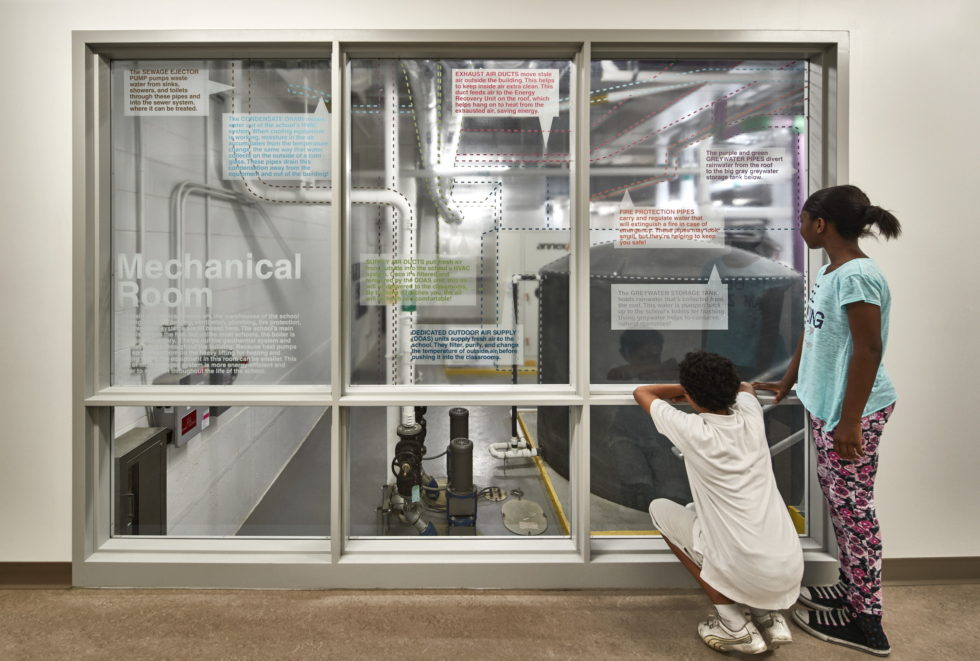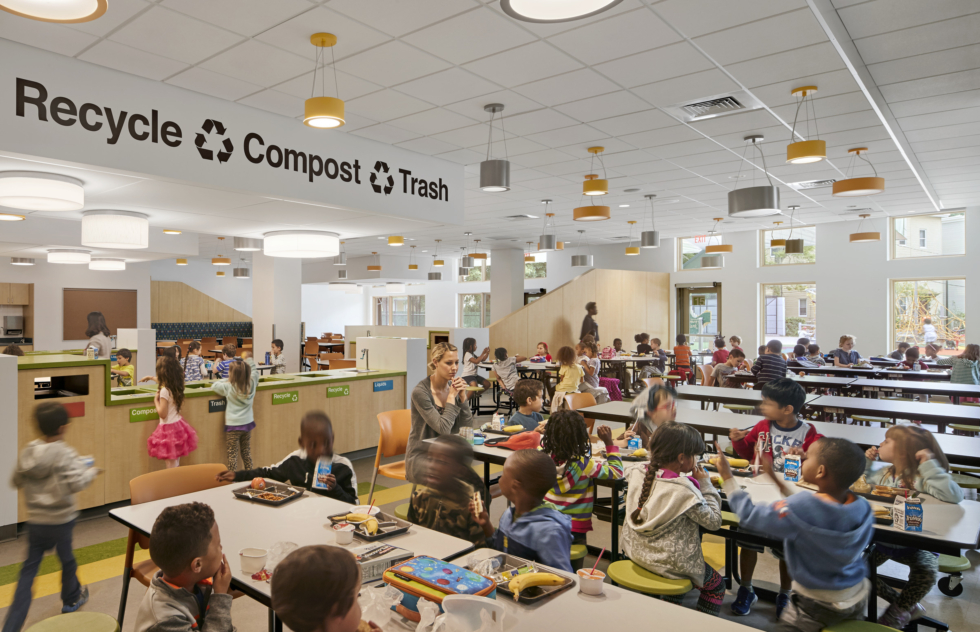By designing so many schools of this kind—and studying a national energy database that tracks schools across the country—we’ve learned much about designing to reach low targets around energy use intensity (EUI). John Lewis is targeting an EUI of 22 kBTU per square foot each year, which is well below the average of a typical school. The intent is that these reductions in energy consumption, plus the use of roof-mounted, energy-producing photovoltaics that are currently being installed, will allow the project to reach net zero energy.
Through this research and experience we’ve realized that we cannot continue to address our issues in silos. We can’t focus simply on energy or wellness, but rather, we need to look at everything more holistically, and hone in on strategies that support our goals. That’s why we’ve assembled multiple sustainability rating systems and targets to allow us to address higher performance more broadly:
- Net Zero Energy: a dramatic energy reduction paired with renewables targets wellness of the planet
- LEED: this holistic standard targets both wellness of people as well as the planet
- WELL Building Standard: Goes beyond LEED to focus on wellness of people more comprehensively
Net Positive Education is also designed to let everyone in on the action. An interactive digital dashboard greets students, staff, and visitors in the John Lewis lobby—and is also visible online—where they can see the building’s energy consumption and generation in real time. It also allows them to explore larger topics such as water conservation and climate change. Says Juan Guarin of Perkins Eastman’s sustainability team: “Whatever we do in the design, we try to make sure it gets implemented into the educational curriculum.”
The latest step in the evolution of Net Positive Education has been the completion of a broad survey funded by the Latrobe Prize—a $100,000 grant from the American Institute of Architects’ College of Fellows, awarded every other year to a firm “for research leading to significant advances in the architecture profession.” The Perkins Eastman grant, shared with Drexel University’s School of Education with additional funding from J+J Flooring, allowed this investigation “to advance the knowledge of how well-designed educational facilities positively impact students.” Completed in December, 2023, it expands our scope of school design beyond indoor environmental quality to include educational adequacy and the school’s role as a community anchor.
John Lewis’ energy-generating capabilities are such that, if needed, it can share energy with nearby Benjamin Banneker Academic High School, which Perkins Eastman designed and built at the same time, and which is also net-zero-energy ready. “Projects like these are our dream projects,” K–12 Practice Area Leader and Principal Sean O’Donnell said in an article on the topic for Perkins Eastman’s magazine, The Narrative. “We have built our practice over the past 20 years to help our clients and our communities create amazing places to learn.”














